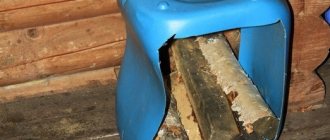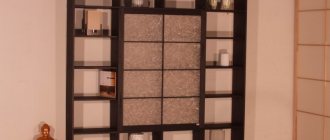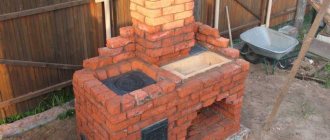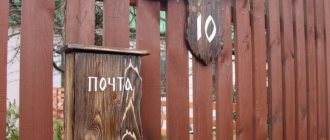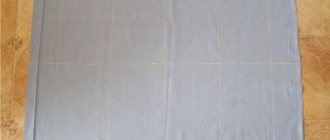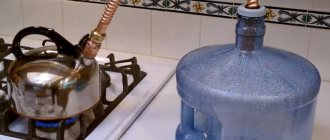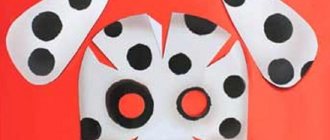Category: interiors Published 02/15/2019 · Comments: · Reading time: 3 min · Views: Post Views: 2,113
If you're looking for skirting boards with a unique look or special profile, isn't it better to make them yourself? Having some basic equipment: a planer, a circular saw, a milling machine - is often enough to make skirting boards of various styles. Although nowadays it is easy to buy both wooden and plastic baseboards, a truly beautiful baseboard can be made from wood with your own hands. Although this is not the easiest option, with a creative approach you can develop several design options yourself with a small set of cutters. This skirting board will look amazing in any room. The benefit of making your own baseboards is that you can make them in custom sizes and styles.
Using the techniques described in this article, you can also make moldings for furniture and trim on windows and doors. If you have a small room where there is no space to place woodworking machines, then all the work can be done using hand-held power tools.
How to make a wooden plinth with your own hands
Wood is rightfully a classic material for finishing a room. First of all, it is valued for its environmental friendliness and high mechanical strength. Wooden skirting boards perfectly complement the parquet floor, harmonizing with it. There are a large number of purchased wooden skirting boards. Making your own plinth will not only save money, but also opens up the possibility of choosing the optimal shape and color of the plinth. We will learn further about how to make a wooden plinth yourself.
Table of contents:
Wooden floor plinth: advantages, features and characteristics
Wooden skirting boards are recommended for use on natural floor finishes. For carpet, linoleum, and tiles, a plinth made of plastic is more suitable.
White wooden plinth is installed preferably in dry rooms, such as a bedroom, living room, and children's room. They are installed on wooden or parquet floors. Among the advantages of such skirting boards are noted:
- environmental safety;
- naturalness;
- attractive appearance;
- high strength.
There are two main options for wooden skirting boards:
The first option is more expensive. For its production, valuable types of wood are used in the form of oak, beech, cherry, and alder. Cheaper models are made from pine or spruce wood. This plinth is suitable for expensive flooring. It is characterized by a long service life, resistance to mechanical damage, labor-intensive installation, and high cost.
The veneered version of the plinth is a cheaper option. Pine or spruce wood is used to make it. Valuable wood species are placed on top of the base. In appearance, the plinth is identical to the massive one, however, the performance characteristics are at a lower level.
Another option for wooden plinths is flexible plinths. The basis for the construction of the plinth is ash, oak, beech and other hard woods. Special wood processing technology allows you to obtain elastic properties. To store such a plinth, special packaging is required; the interaction of the plinth with air leads to its solidification in a certain shape.
The pricing policy for wooden skirting boards is determined by the type of wood used in the process of their manufacture. The cheapest options are pine skirting boards, and the most expensive are oak. The best option is larch; the wood has excellent performance characteristics, almost the same as oak, however, the cost of such a plinth is not much higher than that of pine.
After installing wooden skirting boards, they must be coated with varnish, which provides additional protection for the coating from moisture, temperature changes and other factors.
In addition, there are a huge number of types of skirting boards in relation to their shape. The most popular skirting boards have a triangular cut. With the help of modern woodworking equipment, it is possible to create models of skirting boards with a variety of cutouts and patterns.
Standard plinths have a base height of 1-2.5 cm. The height of the plinths themselves is not limited and ranges from 4 to 30 cm. When choosing the size of the plinth, you need to take into account the height of the ceiling in the room. High skirting boards are suitable for rooms with high ceilings.
Working with wooden skirting boards: material for making skirting boards
The classic solution is to make a plinth from the same type of wood from which the floor is constructed. However, with the help of modern devices it is possible to successfully combine several types of wood.
Coniferous trees are used to make cheap skirting boards. Most often, pine is used as a material. Soft wood is easy to process and cut. Due to the presence of a light texture, the plinth easily accepts any coloring composition. Spruce skirting boards are rare, as this material is difficult to process.
Skirting boards for which larch is used are the most popular, thanks to the successful combination of pricing policy and quality characteristics. This material resists moisture well, does not rot and is used even in the kitchen and bathroom.
Wooden oak skirting boards are elite options. They have unique strength and the highest durability. Using plinths made of bleached or artificially aged oak allows you to give the room sophistication and solidity.
Beech has the same performance characteristics as oak, but differs in color. Beech plinth has a pinkish texture, which does not suit every interior.
If you want to get a nice brown color, we recommend making your own plinth from walnut. This type of wood has special elasticity and is suitable for making flexible plinths. It is this type of plinth that will allow you to decorate walls with unusual shapes. The nut contains iodine, which has a beneficial effect on the atmosphere in the room, making it healthier.
The light color of olive can be obtained from ash. This type of wood, like walnut, has high plasticity, the texture of the wood is clear and has veins.
It is not recommended to make skirting boards from alder, since this material does not have plasticity and is susceptible to excessive moisture. The presence of temporary dampness instantly destroys the tree.
The original coloring of mahogany makes it popular in the manufacture of skirting boards. In addition, the array is durable and lightweight. Although the cost of such wood is quite high compared to all of the above options.
Linden is best suited for making bath skirting boards, as it is characterized by good plasticity and resistance to moisture. Cherries are also very popular. However, its only advantage is the gradual change of color during use.
Please note that when choosing a baseboard without a varnish coating, after treating it with a varnish composition, it will change color. This fact should be taken into account. If you are going to open the baseboard with colorless varnish, then in order to find out what color the baseboard will acquire, wet it with water.
How to install wooden skirting boards indoors
Wooden skirting boards are more rigid than plastic ones, so the installation process has certain subtleties that must be followed. In order to make a wooden plinth yourself, you need to have some experience working with carpentry tools. In addition, it is necessary to choose the right quality material for the job.
For example, the optimal humidity of the board should be 17%. Raw wood is difficult to sand and mill. When choosing wood, you should also pay attention to its appearance. If there are knots, chips, or deformations on the boards, then it is better to refuse to purchase them.
The main type of wood processing before making a plinth is its milling. At this stage, you will need special equipment - a milling machine, and skills to work with it. Making wooden skirting boards with your own hands is quite expensive both in time and money. However, the only advantage of this process is obtaining an individual baseboard that will satisfy all the preferences and desires of the owner of the room.
Before attaching wooden skirting boards, it is necessary to determine the amount of material required for finishing the room. To do this, determine the length and width of the room, multiply the sum of these values by 2 and add a margin of 20-30%. The margin is necessary to compensate for trimming and joining.
Advantages of high baseboards
White floor decor, which has a large height, has the following advantages:
- The ability to smooth out small irregularities. This is especially true for polyurethane and plastic elements, as they have good ductility.
- The wide floor frame can fit almost any surface.
- The white wide plinth perfectly hides the joint between the floor and the wall. In addition, you can paint it.
- If the room is large enough, then such a frame can emphasize its size and make it more elegant.
- Some types of products are additionally equipped with a cable channel that helps hide the wiring.
A wide decorative element has one drawback: it does not allow placing furniture close to the wall. Although this flaw is minimal.
Wooden plinth: types, shape, installation details
Wooden finishing is deservedly considered a classic, not subject to any newfangled trends. There are now many good floor borders on the modern market, but natural wood, just like a hundred years ago, is valued higher. In this article we will talk about the advantages and disadvantages of this material, and also tell you how to correctly select and install a wooden plinth with your own hands.
Photo of a wooden border in the interior.
What you need to know about wooden skirting boards
Advice: when choosing such products, you should remember that today high-quality wood cannot be cheap. These curbs belong to the upper or, at most, middle price category. Even if you decide to make wooden skirting boards with your own hands, they will cost more than budget plastic.
Types of products
At the moment, the market offers two types of products made from natural wood: a border cut from solid wood and a veneered version.
Solid wood planks.
- Solid wood plinth is a classic. The cost of such planks depends, first of all, on the type of wood, as well as on the complexity of the profile, grade and level of processing. Such borders can be located both among elite goods and in the middle price niche;
- The basis of the veneered border is a natural array of inexpensive coniferous species, usually pine or spruce. In some models, glued laminated timber is used as a basis. After the front profile is formed, veneer of more expensive wood species is industrially glued onto the plank. As a result, the output we have is a product absolutely identical to an elite natural solid, but the price of this plinth is an order of magnitude lower than the original.
Important: in part, wooden products include planks made from pressed MDF and covered with natural veneer. Most often they are used for arranging laminated wooden floors.
Product form
Gone are the days when the entire range of such products was limited to a few models with a triangular cut. And these skirting boards differed only in the presence or absence of a chamfer. The modern woodworking market is constantly improving technology and equipment.
Nowadays, wooden planks in terms of the complexity of the ornament are almost as good as polyurethane products or gypsum stucco. The patterns that programmable CNC machines can create can only be compared to hand-carved wood.
Each manufacturer is now trying to stand out with its unique models. Of course, there is a standard classic line of products, in which the size of the base of the bar ranges from 10 to 25 mm. As for the height, there are no restrictions; it starts from 40 mm and in some models can reach up to 300 mm.
Installation subtleties
Although wooden planks are much tougher compared to their plastic counterparts, instructions for self-installation of even an elite baseboard usually do not cause difficulties for people who are well acquainted with a hacksaw screwdriver and a drill. Moreover, some craftsmen make borders with their own hands.
Is it possible to make a border yourself?
Many people ask the question of how to make a plinth from wood with their own hands. But here it should be remembered that making borders yourself is not always economically profitable.
First, you need to choose the right board. The forest humidity level should not exceed 16%.
Raw wood cannot be sanded well, plus it is difficult to mill. Knots, rot, chips and other defects are also undesirable. Ideally, you need a clean, dry, planed board.
Milling of products, in this case, is the main type of processing. Naturally, you can’t do without a milling machine, or at least have a good manual milling cutter equipped with clamps and stops. Plus be able to use this tool professionally.
Installation of wooden borders
After you have used a tape measure to find out how many strips you need, experienced craftsmen recommend adding 20% to this figure. This tolerance is given for trimming and joining.
It is recommended to start the arrangement from the near corner or door opening. It's better to move clockwise. Wood is not plastic, there are no plugs or adapters, which is why precision cutting of corners and proper joining of planks in a straight line are so important.
Trimming diagram without a miter box.
If you have perfectly even 90º corners in your room, then you can safely use a miter box, cutting and joining the planks at 45º. But this rarely happens, so professionals do it differently. To mark, they take a flat plinth and apply it alternately to both sides of the corner, drawing lines along the top and bottom edges of the plank. The intersection of these lines will give the corner cutting line.
Trimming with a miter box.
Advice: in order for the joints on straight sections to be invisible, they need to be made at an angle. The easiest way is to put 2 adjacent planks together, secure them firmly with clamps or regular tape and cut them.
Most often, the planks are mounted using self-tapping screws. You can use self-tapping screws to attach the planks themselves by drilling through them. Or use them to fix clips on the wall, and then hang the plinth on the clips.
In the first case, a number of holes are first made on the plank for underlaying. After which it is applied to the installation site and through these holes the places for drilling holes for dowels are marked. When the dowels are installed, all that remains is to attach the strip, screw in the screws and cover the caps with putty to match the wood.
Clips come in different types, but the essence is the same. The clip is fixed to the wall with a self-tapping screw, after which the strip is put on it. In both the first and second cases, fastening is performed in increments of about half a meter.
Types of clips (1-parquet pin; 2-groove clip; 3-anchor plate)
Components
Fasteners and screws for installing skirting boards
Connecting or transition elements are designed to create a continuous contour and connect the planks in straight sections. If there is wiring, it goes through them easily.
Other details to achieve a harmonious floor frame:
- external and internal corners to insert lamellas at right angles at the junction of walls; the corner can be assembled at an angle of 45 or 135°; corresponding elements are produced for this;
- plugs can be installed in the area where curbs adjoin the door casing or in other blind places.
Mounting brackets can be placed on the wall to allow the baseboard floor frame to be dismantled if necessary.
Homemade plinth for the floor
Hello to all DIY lovers!
This summer we had to do quite a lot of renovations.
And it all started with the fact that we wanted to replace the old wooden windows with plastic ones. However, since our house is wooden and quite old, when dismantling the old windows it turned out that some of the wall logs (especially the logs located under the window sills) were quite rotten. As a result, in addition to installing new windows, we first had to replace almost half the wall.
Naturally, the repairs took a significant amount of time (even now they have not yet completed it), and, in addition, we had to spend significantly more money than planned for repairs in advance.
In this regard, in the last stages of the renovation, we had to save a lot, mainly, of course, on what we could not buy, but do it ourselves.
As a result, when it came to the plinth, we also decided not to buy a ready-made one, but to make it ourselves from ordinary spruce and pine boards.
Moreover, we did not make any special demands on the beauty of the baseboard, since the floor in our house is also quite old and perhaps in a few years it will still need to be replaced.
Since the plinth had to be made from boards, it turned out to be somewhat narrow, although, in general, this width turned out to be quite enough. In terms of height, I decided to make it larger, 50-60 centimeters, in order to make it more convenient to attach to the walls.
Advantages and disadvantages of skirting boards
The advantages of baseboard floor framing are that wires are hidden behind them and heating elements are installed. If you make skirting boards on the floor with fasteners, they are disassembled for cable inspection and repair. There are options with an external channel for wires with a snap-on longitudinal panel. Elastic seals are provided on both edges of the strip so that the nervousness of the wall is not noticeable.
Disadvantages of materials may manifest themselves in the fact that budget types of skirting boards are not suitable for expensive coatings, as they reduce the cost of a stylish interior solution. Caring for the strips is simple; they are washed with a damp cloth, but this cleaning method is not suitable for MDF skirting boards, as it accelerates their destruction.
Varieties
Before we move on to analyzing the question of how to properly make a plinth, let's look at all the most commonly used variations.
There is simply no point in loading your head with absolutely all technologies, so we will consider only the most effective ones.
So, there is a small list of varieties:
The classic option is a plinth made of solid wood. As for the price of this product, everything is simple, it all depends only on the type of wood and the level of its processing.
Such items can be found in the catalog of some elite goods, or in the average price niche.
The main and most commonly used option is natural plinth made from inexpensive wood. These are, as a rule, coniferous tree varieties.
In some designs, the main element is laminated veneer lumber. After the plinth is formed, more expensive types of wood are glued onto it. The result is a product that is very similar to an expensive design.
Before installing skirting boards, you need to make a final choice.
Recommendation! If you are interested in the question of how to make a ceiling plinth, look for additional information on the Internet. In general, the process of installing ceiling skirting boards is quite different from installing conventional ones.
Determining the quantity of materials
According to the instructions, the plinth is placed not only around the perimeter of the room, it must be placed in niches under the radiator, arched openings, and placed on door slopes. Therefore, the perimeter is initially calculated, then the indicated areas are measured and all values are added up. To account for cutting, the resulting value is multiplied by a factor of 1.1.
Fasteners are counted at intervals of 0.5 m, and the number of external and external corners is counted. For a direct joint, two elements are provided per small room, the number of plugs near the door frames and in other places is determined.
How to make a corner correctly
In order to learn how to make a corner on the baseboard, just read the information below.
So, in order to make the corners on the plinth as smooth and correct as possible, you just need to buy a special device called a corner element.
In the modern world, a corner element can be selected for absolutely any connection option. If you are interested in how to make a corner on a plinth without a miter box, turn to the Internet for help.
What are skirting boards made of?
There is a list of the most popular materials from which skirting boards are usually made:
Pine is the most popular material for making skirting boards not only among coniferous woods, but among all timber in general.
It is very convenient and pleasant to make anything from this material; it is very soft, easy to cut and process. The pleasant color allows you to add some original solutions.
Required Tools
Tools for installing skirting boards on the floor
Use a vacuum cleaner to remove dust from the joint between the wall and the floor. Before installation, remove interfering mortar protrusions and other material residues. To do this, use a chisel, a hammer and a straight spatula.
Other tools:
- miter box for cutting baseboards, hacksaw;
- tape measure, pencil, knife, Phillips screwdriver;
- square, hammer.
You will need an electric drill, a hammer drill, drills for the diameter of self-tapping screws, and a drill with a pobedit for holes in the walls. If self-tapping screws are visible, purchase small round button covers for them that match the color of the baseboard.
